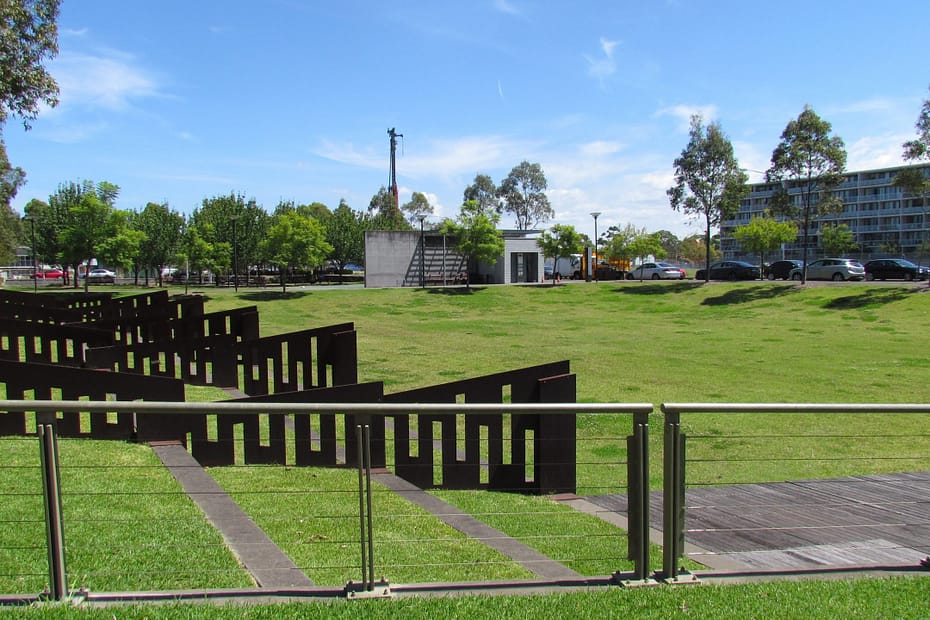The streets, their sidewalks, and the main public spaces in the city are among its most important vital organs.
Public spaces are complex, organic things, and design is only a small part of what goes into creating a great public space.
The best spaces evolve over time when you try short-term improvements that can be tested over years.
However, there are some tips and guidelines that can lay the foundations for a great final design:
1. Design a simple place
In the early stages of the project you should maintain a simple and adaptable design, allowing for future improvement of the space as funds become available and community involvement increases.
Good design must be able to adapt to change.
While buildings come and go, streets and public spaces last longer.
New developments and improvements to the public realm should be designed to respect the current context and accommodate future changes.

2. Spaces accessible to everyone
Good public space provides ease, safety and choice for people when moving to and through spaces.
Helping people find their way and understand how a place works is often overlooked, but it is one of the most important factors in design.
Directional paths and signage must be created to improve accessibility, orientation and connection to spaces and functions.
A clear hierarchy of streets and paths should be established to enable pedestrians,
cyclists and people with physical disabilities to move around the city safely and quickly.
3. Highlight the character of the city
Recognizing and evaluating the differences between one place and another is the cornerstone of good design.
The unique buildings, streets, materials, landmarks and views that give the city its identity must be protected and enhanced.
The appearance of the built environment defines the identity and character of the area and creates a sense of place and community belonging.
High-quality contemporary design that has evolved from its context, including respect for heritage, is also encouraged.

4. Make plans for people, not cars
Streets are the interface between the public and private spheres.
The street should be designed to accommodate all types of jobs,
and not be dominated by one car as is the case in our modern society.
If you plan cities in terms of cars and traffic, you will get cars and traffic.
But if you try to integrate local car traffic into the streets while giving priority to pedestrians and cyclists, you can get amazing results in terms of quality and safety.
By leaving your car at the border of the residence area, walking 100 or 150 meters to your home, and crossing the neighborhood,
You’ll find you have more space for other creative outdoor activities and a more human-centered public space.

5. Use all senses
Human movement by nature is limited horizontally with a speed of about 5 km/h.
The senses are actually directed forward, and the sense of vision undoubtedly develops horizontally.
The social field of view is about 100 metres.
This is the distance at which human figures can be recognized while at a distance of approximately 30 meters more detailed characteristics of a person can be discerned.
The sense of smell also works best at distances smaller than 2-3 metres, while the sense of hearing has a wider working range of up to 35 metres.
With this in mind, try to create opportunities for people with sensory or physical disabilities to use smell, sound, and touch to enhance the user experience.
6. Parks are more important
The world’s great public parks, like other great city spaces, are multi-use destinations.
By collectively deciding what will make a park desirable to attend, parks will attract a wide range of people for many reasons.
The parks also offer a range of entertainment opportunities that extend from a place to sit, through playgrounds, circuit paths, areas and sports facilities in large parks.
While new parks should ideally be at least 0.5 hectares in size, this may vary on urban infill sites.
A minimum of 0.3 hectare is generally considered the smallest viable size for most local informal recreational activities.

7. Trust in the user experience
People tend to take straight roads and take shortcuts,
and the acceptable walking distance for most people in typical daily conditions is 400-500 metres.
For children, the elderly, or people with physical disabilities, the acceptable distance is often shorter.
These distances are affected by the length of the street and the type of path, due to the sense of security it provides and the variety of stimuli it provides.
People also tend to avoid long detours from their predetermined destination, and if that destination is visible, they head straight for it.
8. Choose the appropriate materials
In general, materials used for paving and surfacing in public spaces should be determined by simplicity of design and layout as well as overall quality.
There are also some criteria that you should take into consideration when choosing the right materials for the project:
Sustainability: The project must be made more energy efficient,
use sufficient resources, reduce the environmental impact of the project, and use materials found in the area that can be easily replaced.
Cost: Focus first on the most important areas that attract the greatest amount of public use,
and must ensure that these are carefully detailed and implemented to avoid additional construction and maintenance costs.
Aesthetics: use of simple, robust, fit-for-purpose, multi-functional and carefully designed materials, respecting the existing context and diversifying uses.

9. Community involvement
This principle is about tapping into the collective wisdom of those who know society best: its citizens.
By engaging those who have a historical perspective,
insights into how the area works, and an understanding of what is useful to local people, this will help create a sense of ownership and better ensure the success of public space projects.
Places that make city residents feel good will encourage them to use them, and when they are used well, they have a better chance of getting quality care.

Comments are closed.